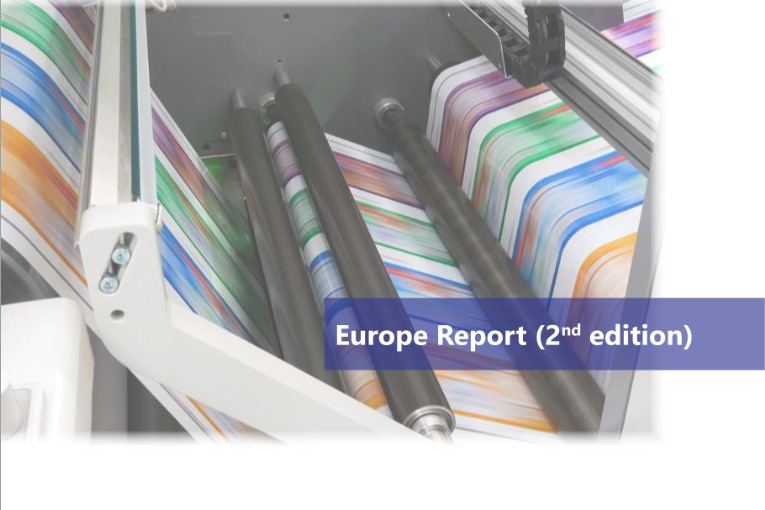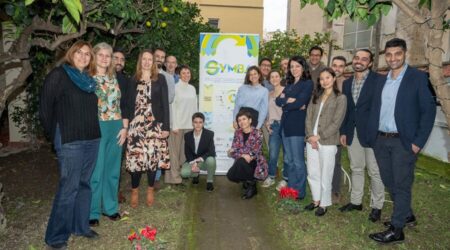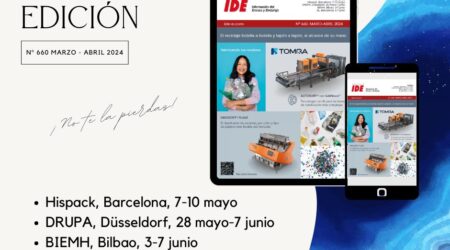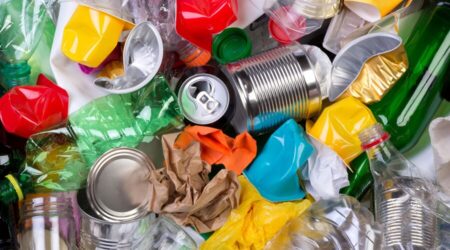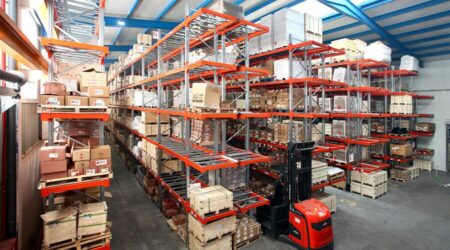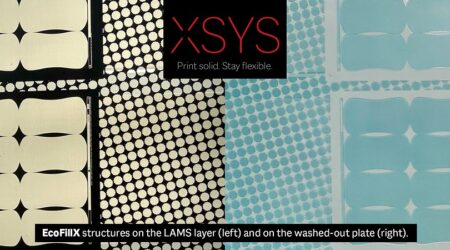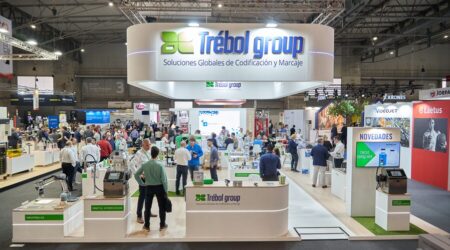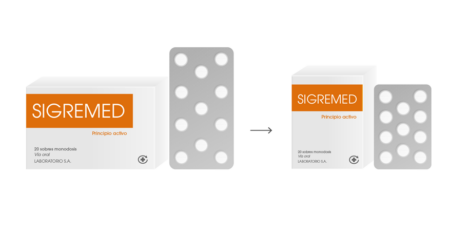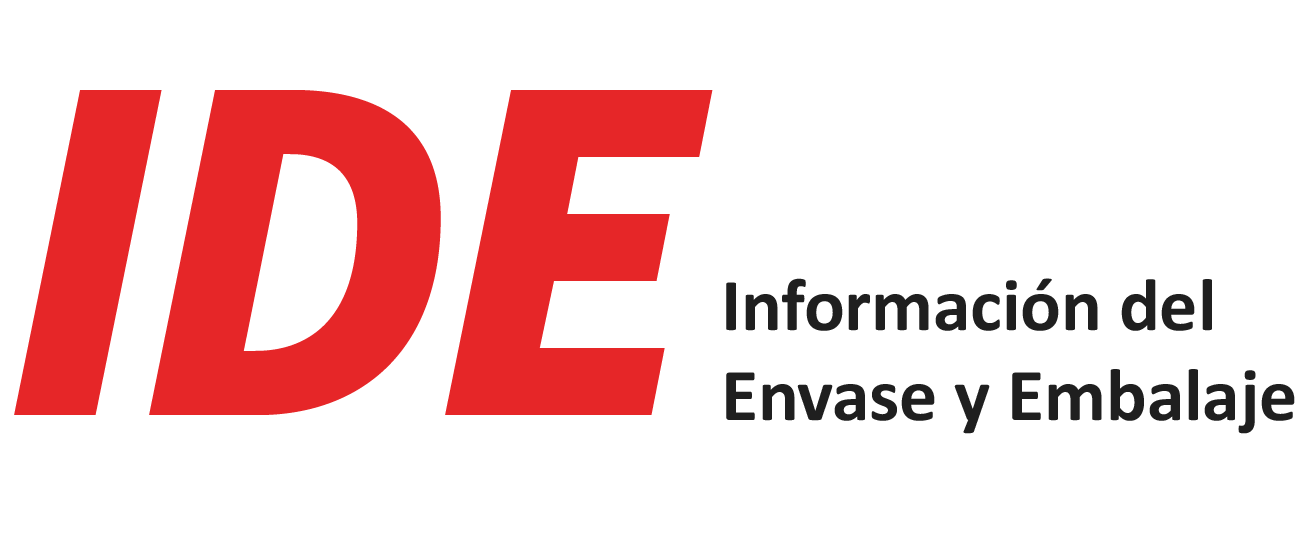All data at a glance: the new Ceresana study on the European label market
Indice
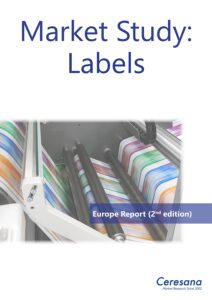 Are mini shampoo bottles or stickers on bananas redundant? The EU Commission wants to ban «unnecessary packaging» with a new regulation. This would also affect label manufacturers. Other EU regulations, however, are increasing the demand for labels, for example, because the nutritional value of food, the energy consumption of electrical appliances, or the hazardousness of chemicals must be indicated. Ceresana has analyzed the market for labels in 21 European countries comprehensively: Consumption of paper and plastic labels in Europe is expected to increase by around 1.5% per year until 2032.
Are mini shampoo bottles or stickers on bananas redundant? The EU Commission wants to ban «unnecessary packaging» with a new regulation. This would also affect label manufacturers. Other EU regulations, however, are increasing the demand for labels, for example, because the nutritional value of food, the energy consumption of electrical appliances, or the hazardousness of chemicals must be indicated. Ceresana has analyzed the market for labels in 21 European countries comprehensively: Consumption of paper and plastic labels in Europe is expected to increase by around 1.5% per year until 2032.
Biobased labels for biobased packaging
The total area of small labels and stickers adds up to millions of square meters. As environmentally friendly packaging is increasingly in demand, labels made from biodegradable or recyclable materials, such as labels made from bioplastics, can score particularly well in conjunction with biobased adhesives. Wine and beer drinkers usually do not have to worry in this regard: Labels for reusable bottles are traditionally made of paper and attached with washable starch or casein adhesives. However, market shares of glued labels are currently decreasing. The high inflation rate is troubling many consumers. Currently, the most dynamic development occurs in the «cosmetics and pharmaceuticals» sector, which consumes more and more plastic labels. In the production of shrink film labels (shrink and stretch sleeves), the controversial plastic grade PVC is increasingly being replaced by PET. Demand is increasing in particular for PET-G modified with glycol.
Labels are becoming smart and talkative
QR codes, RFID tags and near field communication (NFC labels): Labels are increasingly becoming as «smart» as digitalization and the Internet of Things demand. Smart labels can communicate with smartphones or other devices: Labels report the expiration products or other important information about the contents of the packaging; they make supply chains transparent and ensure anti-counterfeiting and traceability. However, the biggest growth occurs in in-mold labels (IML), which consumers usually don’t perceive as labels at all: A printed film is inserted into a mold, for example for ice cream cups, and then liquid plastic is injected – when cured, the label and packaging form a single unit. During the IML process, the label does not have to be glued on separately; the packaging is created in one individual production step. Label and packaging can also be recycled well because they are made of the same plastic, usually polypropylene or polyethylene-HDPE. Market researchers at Ceresana expect demand for in-mold labels to grow by around 2.4% per year throughout Europe.
The current Ceresana market study «Labels – Europe”:
Chapter 1 presents label consumption as well as revenues generated with labels. Market forecasts are made up to the year 2032. The data on label consumption is broken down by areas of application, by different label types, andby materials:
- Paper
- Polyethylene
- Polypropylene
- PVC
- PET
- Other plastics
Chapter 2 examines the respective total revenues and consumption of the various label types for 21 European countries, differentiated in each case for paper and plastic labels.
A distinction is made between the different areas of application of labels. The main categories are broken down into individual sub-categories for this purpose: In the case of beverages, for example, wine, beer, water and lemonades are treated separately; in the case of food, for example, fruit, vegetables, baked goods, dairy products and canned food are distinguished. Cosmetics, pharmaceuticals and other label consumers are also considered. In terms of label types, a distinction is made between these types, also separately for paper and plastic:
- Self-adhesive labels
- Glued labels
- Shrink labels
- In-mold labels
- Other labels.
Chapter 3 provides useful company profiles of the most important producers of labels, clearly arranged according to contact details, revenues, profit, product range, production facilities, brief profile as well as product types and application areas. Detailed profiles are provided by 68 manufacturers, such as Ahlstrom Group, Amcor Ltd., CCL Label, Inc., Dow Inc., Essentra Plc., Fuji Seal International, Inc., Huhtamaki Oyi, Mondi plc, Westrock Company, and Zebra Technologies.
Further information on the new market study «Labels – Europe» (2nd edition): https://ceresana.com/en/produkt/labels-market-report-europe
This brochure provides further information on the study “Labels – Europe (2nd edition)” The Market


